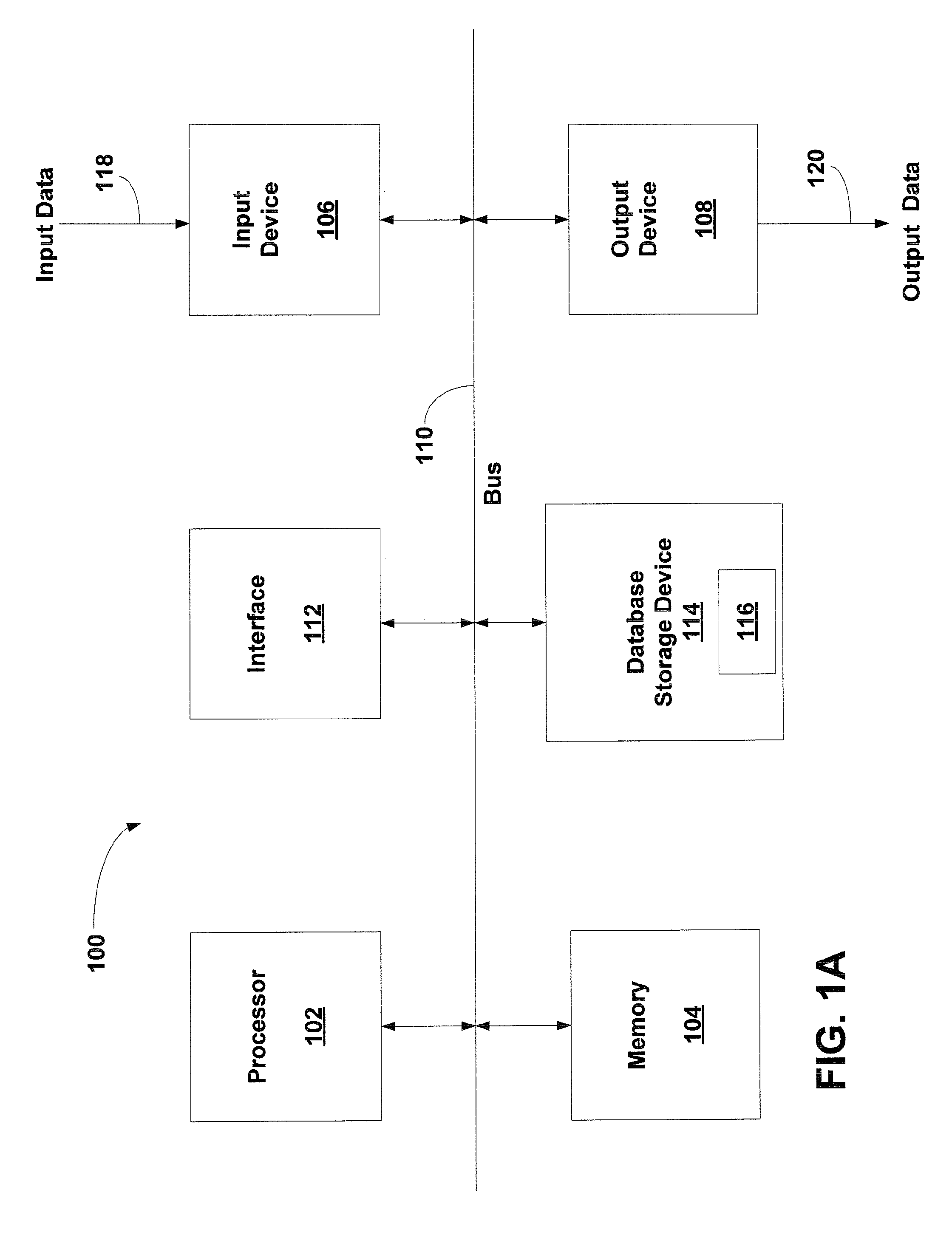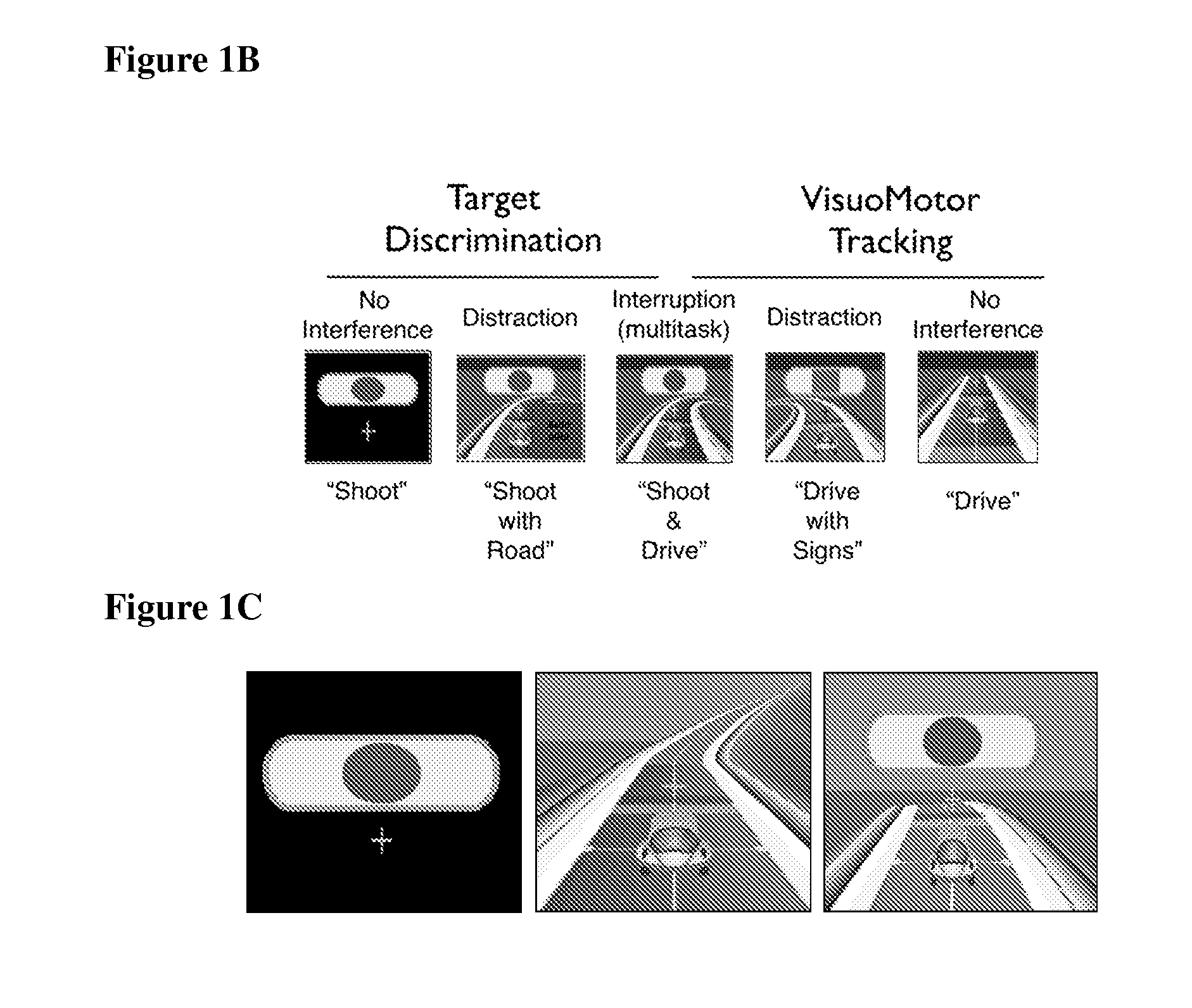Enhancing Cognition in the Presence of Distraction and/or Interruption
a technology of distraction and interruption, applied in the field of enhancing cognition in the presence of distraction and/or interruption, can solve the problems of old brain's ability to maintain cognitive performance and the difficulty level of the moving vehicle is based on speed, so as to enhance cognition and enhance cognition in the individual
- Summary
- Abstract
- Description
- Claims
- Application Information
AI Technical Summary
Benefits of technology
Problems solved by technology
Method used
Image
Examples
example 1
Experimental Setup for Assessment
[0227]The study involved adults at various ages (recruited into 4 randomized study groups: 1) single-task training, 2) multitasking training, 3) distraction training, and 3) no-contact control (NCC). Training groups engaged in 12 hours of home training and 6 laboratory visits: 1) neuropsychological testing, 2 &3) pre- and post-training cognitive assessment, 4 &5) pre- and post-training neural assessment, and 6) six-month follow-up cognitive evaluation. NCC group engages in 1) neuropsychological testing, 2 & 3) pre- and post-no-contact interval cognitive assessment, 4 & 5) pre- and neural assessment.
[0228]To evaluate interference abilities pre- and post-training, participants engage in five experimental tasks from three categories:[0229]single tasks (1) target discrimination—“shoot”, (2) visuomotor tracking—“drive”;[0230]distraction tasks (3) target discrimination while passively exposed to tracking task—“shoot with road” (4) visuomotor tracking while...
example 2
Training
[0242]There were two types of interference training (distraction training and multitasking training), one active control group (single-task training) and a no-contact control group (NCC), which except for the NCC engaged in 12 one-hour training sessions over a 4-week period at their homes. Single-task training involved a randomized alternation between the two single tasks described in the interference assessment section: target discrimination tasks and visuomotor tracking tasks were presented in 3-minute blocks. Comparably, distraction training involved a randomized alternation of the two distraction tasks. Multitasking training will involve 12 sessions of simultaneous target discrimination and visuomotor tracking. Task difficulty at the start of the first session was individually customized based on single-task levels obtained via the thresholding procedure during the preceding lab visit (i.e., road speed and target discrimination response window optimized to result in 80% ...
example 3
Behavioral Assessment with Interference
[0244]A behavioral assessment of interference effects in younger (20s) and older adults (e.g. 60-80 years of age) revealed significant distraction and interruption costs both within and between age groups versus the no interference condition. This was seen in the primary task of target discrimination (FIGS. 2, 3). The same finding was observed for visuomotor tracking for interruption, but not distraction.
[0245]An adult lifespan study of individuals (20-80 years of age) revealed a significant distraction and multitasking cost on the accuracy of target discrimination (FIG. 4A), and a significant multitasking cost on the accuracy of visuomotor tracking for each of the six decades of life studied. (FIG. 4B) No impact of distraction on tracking was observed at any age. These interference costs increased with each decade of life and a significant increase in all interference costs were observed between groups of younger and older adults, as classifie...
PUM
 Login to View More
Login to View More Abstract
Description
Claims
Application Information
 Login to View More
Login to View More - R&D
- Intellectual Property
- Life Sciences
- Materials
- Tech Scout
- Unparalleled Data Quality
- Higher Quality Content
- 60% Fewer Hallucinations
Browse by: Latest US Patents, China's latest patents, Technical Efficacy Thesaurus, Application Domain, Technology Topic, Popular Technical Reports.
© 2025 PatSnap. All rights reserved.Legal|Privacy policy|Modern Slavery Act Transparency Statement|Sitemap|About US| Contact US: help@patsnap.com



